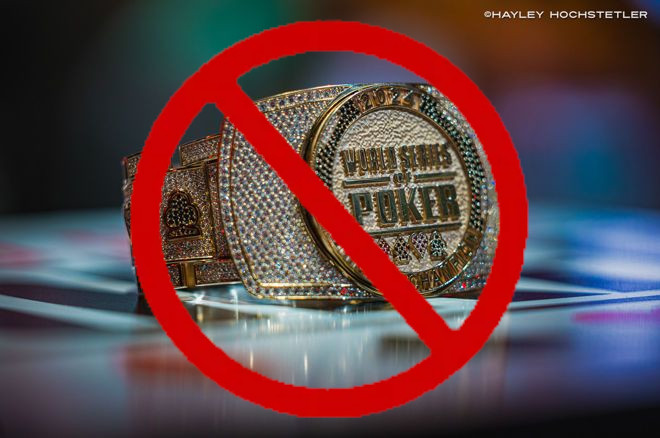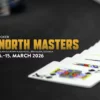
There will be one fewer bracelet awarded than expected at the 2025 World Series of Poker after controversy erupted in the Millionaire Maker. Players are still getting paid from the event, though WSOP said in its official tweet on the issue that “the remaining prize pool will be split between the final two players”.
While details about what the investigation revealed are sparse, and will likely remain so due to operational security concerns, the controversy initially erupted after allegations of chip dumping started coming from some industry people watching the final table of Event #53: $1,500 Millionaire Maker.
Other keen poker eyes saw it all differently, however. Top players like Scott Seiver and Patrick “Pads” Leonard also hit the socials to suggest that maybe there was nothing to see here.
Anatomy of a Controversy
In a way, a controversy like this seems destined to happen during this year’s series, at least in hindsight. One of the prime factors in the controversy from Event #53 was the inclusion of extra prizes, added to the pot by Club WPT Gold as part of a promotion on their site to send some players to the WSOP.
As part of the promotion, $1 million bonuses were up for grabs to players who got into a WSOP event through the promotion and then won it.
While this seems like a great way to promote your games and send some players to the biggest poker series in the world with a bit of an extra sweat, a wider view should also have raised potential red flags. In fact, the very situation alleged to have occurred in the Milly should have been pretty easy to predict as a possibility, at least.
As suggested by the tweet from Rob Kuhn, the issues arose when accusations of chip dumping were leveled. With the final two players heads up for the bracelet, it looked like James Carroll was in control of the game.
His head-up opponent, Jesse Yaginuma, was one of the players in line for an extra million if he took this one down, but it looked for all the world like he’d fall one spot short of the bracelet and the bonus. At one point, he was down more than 9:1 before he mounted a comeback for the ages.
One of the most discussed hands from the final table involved a pre-flop raise with 6-high. With blinds at 1.5m/3m/3m in Level 43, Yaginuma limp-called the raise to 13 million with jack-eight. Carroll fired the flop with air, checked the turn, then fired big on the river with his 6-high bluff.
Yaginuma had flopped top pair with his jack and just called it down to take a huge lead. Many watching the game saw this hand in particular as a strange one, but it wasn’t the only example that was pointed to.
Predictable?
Poker is a game about making money. That’s the whole point when you buy into a tournament or sit at a cash table — cash out for more than you bought in for.
As a result, in many cases, players are always looking for ways to maximize their profit in any given spot. Especially given how unbalanced tournament payouts are, looking to maximize profit during the endgame of a big tournament is a crucial part of ensuring a healthy bankroll.
And that sets up the potential conflict in this one. With an extra $1 million up for grabs, but only with a specific outcome, it opened the door wide for less scrupulous players to find a way to collect that extra money. And given that poker tends to attract people who are both very smart, but also not always entirely on the “straight and narrow”, in most cases those players will find a way to make it work out.
That left a situation like the end of the Milly almost an inevitability. With added money in the pot for a specific outcome, and multiple potential games for it to happen in, a situation where a few players decided it was in their interests to “guarantee” the extra $1 million regardless of the means seems like it was destined to happen.
WSOP Response
Admittedly, the World Series of Poker was in a difficult spot. With public accusations of collusion and chip dumping flying around the socials, and coming from some fairly well-respected names, the operator had no choice but to launch an investigation into what happened.
As mentioned off the top, in the end, their completed investigation found … well, we don’t know what it “found” exactly, but whatever the investigation uncovered was enough for the WSOP to rescind the bracelet and chop the prizes with no official winner declared for the event. And that highlights one of the problems with this sort of situation in poker — there is always very limited information available about the structure and findings of investigations like this.
This is generally done for the valid reason of operational security — releasing a detailed report of their findings could also reveal key information about security procedures that would make future cheating easier, so it’s a tough spot for the operator. The end result, however, is that the investigation ended with the apparent allegations of chip dumping still in place, but with no actual public evidence produced to demonstrate the collusion.
The decision to rescind the bracelet clearly indicates WSOP thinks collusion occurred between the heads-up players — that finding is the only valid justification they could have for taking away a bracelet. WSOP and many players point to the idea that poker is an individual game and that collusion between players has to be strictly enforced.
I can’t argue with that principle, but the problem with the “individual game” principle is that the flip side is “I paid my money, I play my stack.” That means I can play that stack however I want, within the rules of the game. If I wanted to run an ill-conceived three-barrell bluff with six-high, that’s ENTIRELY within my rights as the player.
Might that look like dumping from the outside? Sure, it easily could, but it can also be an example of me misidentifying a spot I can force a fold, and just me being a “bad poker player”. Without direct evidence of collusion, JUST seeing a player make a few “odd plays” that lose them money isn’t even close to evidence of collusion — Collusion is just ONE of the possible reasons for play like that.
Perhaps the WSOP investigation did find hard evidence of collusion. Maybe there’s audio of players discussing it in the bathroom on a break or something — part of the problem here is we don’t know what that evidence was, or if it actually exists.
Without clear evidence of collusion, this seems like a potentially problematic decision for WSOP. They were put into a near-impossible spot by the Club WPT Gold promotion, but at the end of the day, a decision like this requires more than just a few oddly played hands at the end of a long few days of poker.









